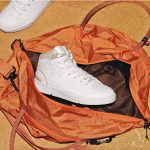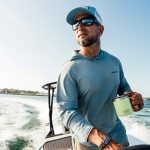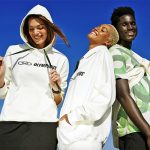Wolverine Worldwide became one of the few companies in the outdoor space to hike its full-year guidance in recent months after seeing second-quarter results come in better than expected due to the margin benefits from its transformation plan and traction gained by its Saucony and Merrell brands.
“We continue to strengthen our brands’ positioning in the marketplace with improved product pipelines, more effective demand creation initiatives and better brand management,” said Chris Hufnagel, president and CEO, Wolverine Worldwide, on an analyst conference call. “While the macro environment remains dynamic and challenges no doubt, remain on the horizon, we’ve seen key elements of our turnaround effort continue to build momentum, and we’re encouraged that our strategies continue to gain traction.”
In the quarter ended June 29, sales on a reported basis fell 23.7 percent, or 24.7 percent in constant currencies (cc), to $527.7 million. Excluding the impact of the divestiture of Sperry, Keds and Wolverine Leathers businesses, sales on an ongoing basis declined 18.4 percent (-18.3 percent cc) to $424.8 million, improving sequentially from a decline of 24.5 percent seen in the first quarter.
“We’re seeing increased demand for our brands and products as we execute our consumer-focused strategy,” said Taryn Miller, the company’s recently hired CFO, on the call.
The sales outperformance, in part, reflects approximately $10 million of over-delivery due to a timing shift between the second and third quarters. The transition of Saucony inventory from its Louisville distribution center to a new California DC was completed with minimal disruption, avoiding a previously expected shift of approximately $5 million to the third quarter. In addition, approximately $5 million of wholesale orders shipped earlier than originally expected to the benefit of the second quarter.
The year-ago quarter also includes more than $55 million of revenue that did not repeat in the second quarter this year, including excess inventory and business model changes. Taking out the $55 million in non-recurring revenues, ongoing sales in the latest quarter were down 8.6 percent.
Segment Highlights
Active Group sales were down 20.2 percent (-20.0 percent cc) to $305.9 million, improving from a decline of 24.9 percent seen in the first quarter. Among the Active Group’s larger brands:
- Merrell’s sales were down 19.2 percent (-18.9 percent cc) to $142.7 million, following a decline of 24.9 percent in the first quarter,
- Saucony’s sales dropped 28.0 percent (-27.6 percent cc) to $102 million after sliding 26.2 percent in Q1, and
- Sweaty Betty’s sales were flat (-0.7 percent cc) at $44 million, down 4.8 percent from the first quarter.
The Active Group also includes Chaco.
Work Group sales declined 10.9 percent (-11.0 percent cc) to $105 million, showing strong sequential improvement against a 21.3 percent decline in the first quarter. Wolverine Brand sales slid 3.1 percent (-3.2 percent cc) following a 20.3 percent decline in the first quarter. The group also includes Cat footwear, Bates uniform footwear, Harley-Davidson footwear, and Hytest safety footwear.
Income Statement Summary
Adjusted gross margin in the quarter jumped 400 basis points to 43.1 percent, which aligns with expectations and reflects a healthier sales mix, lower promotional activity, and the benefit of supply chain cost initiatives.
The adjusted operating margin of 6.3 percent exceeded Wolverine’s outlook for the quarter driven by operating cost leverage on the stronger revenue performance.
Adjusted diluted EPS fell 21.1 percent to 15 cents a share from 19 cents in the year-ago period but showed sequential improvement from 5 cents in the first quarter and topped Wolverine’s forecast of 10 cents a share.
Balance Sheet Summary
Inventories were cut 44 percent by quarter-end due to efforts to optimize inventory levels as well as the benefit of improved planning and execution.
Net debt was slashed by $270 million to $666 million.
Transformation Plan Update
Hufnagel, who took over as CEO at this time last year, detailed WWW’s turnaround efforts that first focused on stabilizing the business before transforming the organization and ultimately returning to growth mode.
Stabilization steps included streamlining its cost structure and significantly reducing debt as both constrained brand investments as well as reducing bloated inventories in the marketplace “that undermined our brand position in the market and impeded our pipeline of new product innovation.”
Transformation steps included creating an internal consumer and trend insight group called The Collective; establishing in-house creative and PR resources; implementing brand protection measures to clean up the marketplace; fostering stronger relationships with wholesale and distribution partners in the U.S. and overseas, and increased investments in brand awareness.
The company is also pushing to fast-track new innovations ahead of traditional development timelines.
Offering some examples of progress at the brand level, Hufnagel said that at Saucony, accelerated product life cycles in the run category drove a 900-basis point increase in revenue contribution year over year in the second quarter from new product introductions.
The successful introduction of the Ride Guide 17 and Endorphin 4 collections earlier this year was followed by the launch of the Triumph 22, which has delivered strong double-digit growth at run specialty and on saucony.com. Last month’s launch of Hurricane 24 also saw sell-throughs. The Endorphin Elite 2, a pinnacle franchise featured at the Paris Olympics, was released a few weeks ago and reportedly sold out in one hour.
On the lifestyle side, Saucony has found success tapping into the retro-tech trend. The ProGrid Omni, ProGrid Triumph, and Ride Millennium have had strong sell-throughs, and the trend is reportedly helping the brand reach new accounts.
In the UK, sales at saucony.com grew 40 percent in the second quarter, benefiting from a “key city” approach that prioritizes activations, including Saucony’s sponsorship of the London 10K. Overall, Saucony.com sales were up 21 percent in the quarter.
Hufnagel said he is encouraged by the sell-throughs and feedback he has heard from run specialty accounts. “No one’s declaring victory. We have to get to a place where we’re stealing share again. But the initial steps we’ve taken there from a brand perspective, and how we thought about that brand, how we want to manage the brand, I think to give us some very early initial stages that we’re on the right path,” he said.
Sweaty Betty found success with a “Just Wear The Damn Shorts” marketing campaign that led shorts sales to “nearly double” in the quarter. Hufnagel said the success is part of Wolverine’s larger push to emphasize brand investments in storytelling to engage consumers.
“I believe brands need to do more than just have great products that perform well to win, they also need to engage consumers with timely stories that only they can tell, leveraging their unique DNA,” said Hufnagel.
Other wins for Sweaty Betty include achieving double-digit growth in its leggings category, driven by its hero franchise, “Power.” The expansion earlier this year of the Explorer collection for warm weather and travel delivered “very strong double-digit” growth and helped diversify Sweaty Betty’s assortments.
Hufnagel said Wolverine’s brands have also benefited from steps to “shut down rogue selling,” optimize distribution, and emphasize a “pull” model over a push model.
“Merrell, for example, has cultivated a much cleaner selling environment this past season and successfully reset several of its key accounts in the U.S. with more modern assortments to position brands more appropriately,” said Hufnagel. “As a result, in the second quarter, Merrell drove growth at retail in hike despite the category headwinds and achieved its third straight quarter of acceleration in market share gains.”
The Moab Speed 2 and Agility Peak 5 were cited as examples of Merrell’s “faster and lighter styles at elevated price points that continue to drive sell-through and create momentum.”
Merrell has also benefited from several collaborations, including one with the Greyson golf brand that “quickly sold out and generated 500 million earned media impressions in the process.”
Hufnagel stressed that he did not “want to underestimate the challenges in the U.S. wholesale landscape, and we don’t necessarily see those abating in the short term.” However, he said consumers are responding to newness from Wolverine’s brands. “There are winners in every market, and where we are bringing innovative products with strong storytelling, we are getting really strong reactions,” he said.
Outlook
Looking ahead, due to the solid first-half results and order patterns so far for its global wholesale and distributor business, Wolverine now expects:
- Revenue from its ongoing business of approximately $1.71 to $1.73 billion, up from prior guidance between $1.68 to $1.73 billion. Sales are expected to decline 7 percent at the mid-point of the range.
- Active group sales are expected to decline in the low teens (declined in the mid-teens previously). Merrell is expected to decline low double-digits (declined low-twenties previously); Saucony is projected to be down low-twenties (unchanged); Sweaty Betty is expected to be flat (unchanged).
- Work Group sales are expected to decline high-single-digits (unchanged). Wolverine Brand is expected to decline mid-single-digits (declined high-single-digits previously)
- Gross margin of approximately 44.5 percent, up 460 basis points compared to 2023, unchanged from the previous outlook.
- Operating margin of approximately 6.0 percent and adjusted operating margin of approximately 7.4 percent, up 350 basis points compared to 2023. Previous guidance called for operating margins of roughly 5.7 percent on a reported basis and 7.0 percent on an adjusted basis.
- The effective tax rate of approximately 18.5 percent, as compared to the previous outlook of 18.0 percent.
- EPS in the range of 53 cents to 63 cents and adjusted EPS in the range of 75 cents to 85 cents, up from previous guidance calling for EPS between 43 cents to 63 cents on a reported basis and 65 cents to 85 cents on an adjusted basis.
- Inventory to decline by at least $75 million at year-end compared to the prior year-end, unchanged from previous guidance.
- Net debt at year-end to be approximately $565 million, a reduction of $175 million from the prior year-end, unchanged from previous guidance.
For the third quarter, revenue is expected to be approximately $420 million, representing a year-over-year decline of approximately 11 percent and continued improvement in the 24.5 percent decline seen in the first quarter and 17.9 percent in last year’s fourth quarter. The sequential improvement is expected to benefit from the company’s brands continuing to build momentum behind new products and strengthening market activations, as well as the reduction in headwinds caused by non-recurring year-ago sales.
The Active Group is expected to see a decline in the low teens, with Merrell down mid-single digits, Saucony off in the low-twenties, and Sweaty Betty growing low-single digits. Work Group sales are expected to decline by high-single digits, with Wolverine Brand down at the same rate.
The third quarter’s gross margin is expected to be approximately 45 percent, an increase of 300 basis points from last year and in line with the first-half performance. With an improvement in operating margin expected, adjusted EPS is expected to reach approximately 20 cents a share, up from earnings of 11 cents a share a year ago.
Image courtesy Saucony















